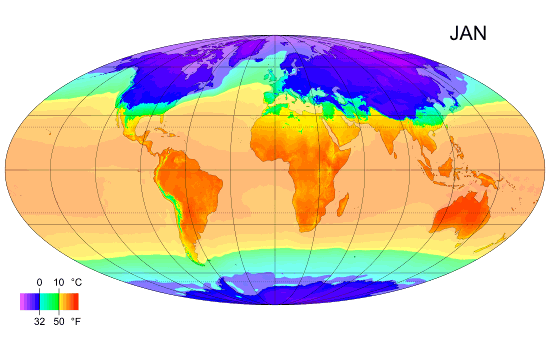The Wine Belt
Between 30° – 50° latitude, both North and South.
Most of the world`s premium wine production and most suitable climate is found here.
Cold Climate
Regions close to 50° North or South such: Germany, Northern France , South Argentina.
Closer to the Poles, with lower average temperatures and lower sunlight. The main struggle is ripening (sugar, acid, PH balance).
Cold climate suits best white wine production because white grapes generally ripen earlier.
Best suited white varieties are Riesling, Chardonnay, Grüner Veltliner, Gewürztraminer, Pinot Gris, Albariño and Sauvignon Blanc .
Best suited red varieties are Pinot Noir, Zweigelt and Blaufränkisch.
Cold climate enhances acidity and reduces sugar. Tannins and color are often low due to low ripeness.
Medium Climate
Regions close to parallel 45 North or South such: Piedmont, Rhône Valley, Bordeaux, Willamette Valley in Oregon.
45 is exactly half way between the Pole (90) and the Equator (0).
Hot Climate
Regions close to 30° North or South such: California, Italy, Southern Spain, Argentina, Australia, South Africa.
Closer to the Equator with average high temperatures, and high sunlight.
Hot climate is associated with ripeness, deep flavor, jammy fruit.
Hot climate tends to produce sweeter wines.
Overripe and oxidized fruit tends to color white wines towards golden shades of yellow, and red wines towards brown shades.
Hot climate enhances sugar and reduces acidity. Tannins, color and alcohol are often high due to ripeness.
Definition of cool climate wines
Wines made from grapes grown either:
- south of latitude 37.5 degrees south
- north of latitude 37.5 degrees north
- from a property in the Southern or Northern hemisphere which has an average January/July (whichever is applicable) temperature below 19ºCelsius
- vineyard site above 800m in altitude
